Wafu Dressing is an easy vinaigrette you can whip up in less than a minute. With the perfect balance of flavour from soy sauce, rice wine vinegar and sugar, this Japanese salad dressing will bring effortless flavour to raw salads, vegetables and grilled meats.
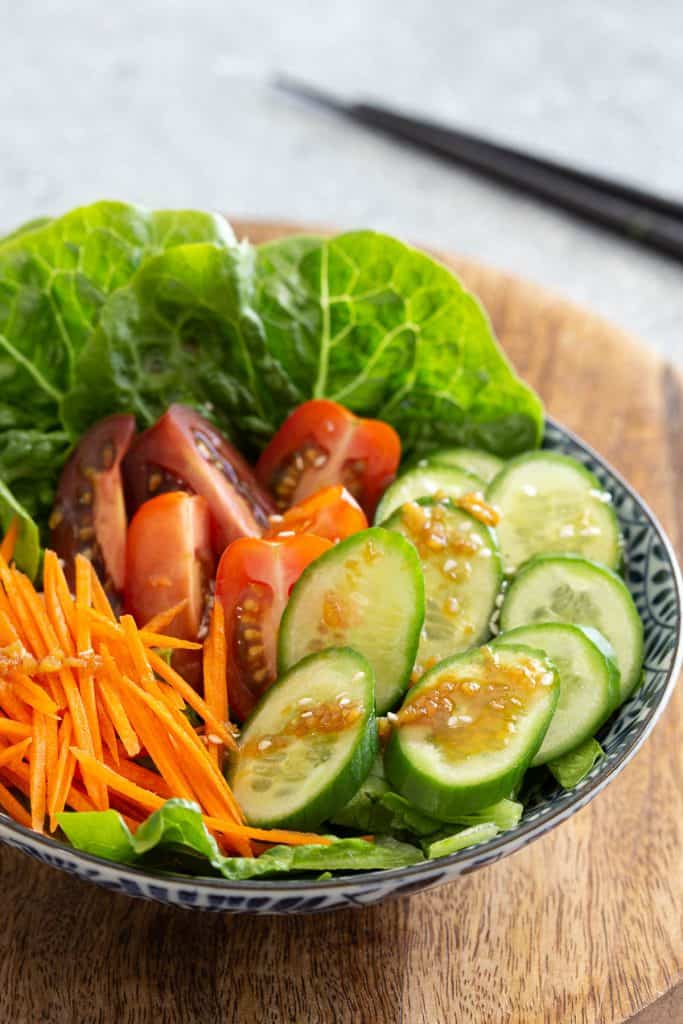
Why We Love This
Like all good homemade sauces and dressings, this recipe has no additives or preservatives.
Making your own salad dressings rather than buying store-bought is always a great idea. Many imported Japanese sauces (such as citrus/soy ponzu, sesame goma dare or okonomiyaki sauce) can be quite expensive to buy, but really easy to make if you have a few basic ingredients in your pantry. Making your own not only helps you save money, but you can make the perfect amount for what you need, and you can tweak the flavour to suit your taste.
Just like Indonesian gado gado salad, this amazing salad dressing will make you forget you’re eating vegetables. It’s the perfect balance of savoury, tart and sweet flavours all at once.
Related: Smashed Cucumber Salad / Japanese Coleslaw
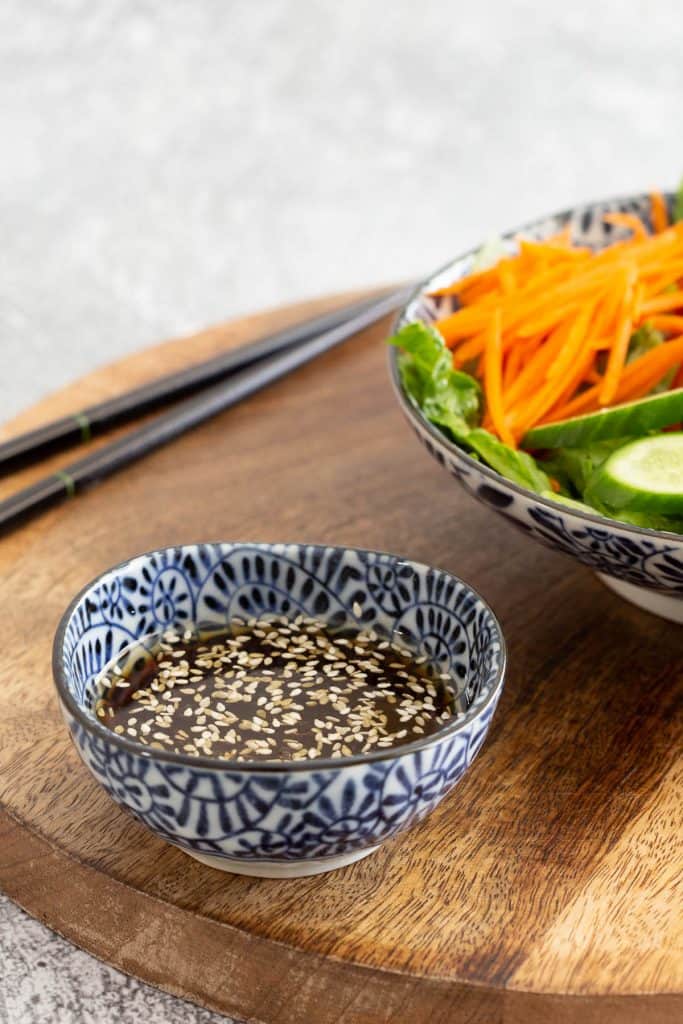
What is Wafu Dressing?
Wafu translates as ‘Japanese-style’, so this dressing is perfect to infuse your tasty homemade salads with Japanese flavour.
There are many variations to the recipe, however the key ingredients of soy sauce, rice wine vinegar and sugar are essential.
Wafu dressing is often paired with osozai (healthy Japanese side dishes) commonly found in bento boxes or lunch sets at Japanese restaurants.
What You’ll Need
- Soy Sauce – You can use any kind of regular or light soy sauce for this recipe. For the best flavour and quality, use a Japanese soy sauce. Tamari is also fine for a gluten-free option.
- Rice Wine Vinegar – Look for this in the international aisle at your local supermarket, otherwise head to an Asian grocer or buy online. If you don’t have this, you can substitute for apple cider vinegar, white wine vinegar, or white vinegar if that’s all you have on hand.
- Vegetable Oil – It’s best to use a neutral flavoured oil that will enhance rather than overwhelm the other seasonings. Canola oil, sunflower oil or vegetable oil are all good options.
- Sesame Oil – Traditionally, wafu dressing doesn’t contain sesame oil, however we love how it adds a depth of rich, nutty flavour. You can leave it out if you prefer. Choose a high quality brand for the best flavour as some sesame oils can have less flavour than others.
- Sugar – Sugar in this recipe acts as a sweetener to offset the acidic tang of the vinegar and bring everything into balance. Any sugar is fine – we used white, but brown or raw sugar will work too.
- Garlic – Freshly chopped or minced garlic works. You can also add 1/2 tsp of ginger for an extra flavour hit if you like.
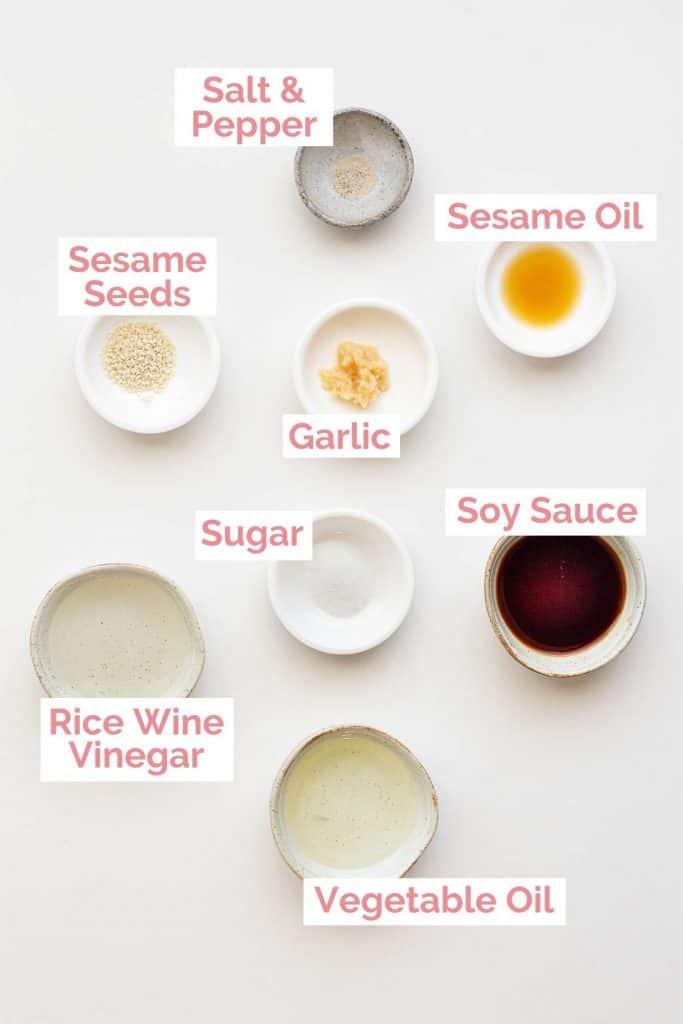
Wandercook’s Tips
- Portable Dressing – If you plan on taking wafu salad to work, store the dressing separately in a small tub. This will keep the salad leaves crisp and fresh rather than soggy.
- Optional Garnish – Top with a sprinkling of white sesame seeds (toasted for extra flavour!) or shichimi togarashi (7 spice blend).
FAQs
Just about any! Wafu dressing is perfect for leafy greens, raw veggies, or basically any kind of salad where you’re looking for a burst of sweet + savoury + tart flavour. Use it with finely shredded cabbage for a simple side dish, or pour it over freshly sliced cucumber, tomato and iceberg lettuce. We also love it paired with crunchy julienned carrots.
In addition to salads, it’s also great for pouring over noodle bowls, rice dishes, and steamed or stir-fried veggies. You can even use it as a steak sauce or dipping sauce for enoki beef rolls.
Olive oil has a strong flavour compared with vegetable oils like canola or sunflower oil. Since this can affect the overall flavour of this dressing, we don’t usually recommend it. Of course, if that’s all you have on hand, you can still use it. It could be a good idea to use less (start with 1 tsp), taste the dressing, and add more to your taste as required.
It will last for up to a week if stored in an air-tight container in the fridge.
We love serving this salad as part of a BBQ feast alongside teriyaki chicken or negima yakitori, cevapi (caseless sausages). It’s a great side dish alongside heavier sides like Japanese potato salad or Aussie potato bake.
Variations
- Add Flavour – Add grated fresh daikon, onion or ginger. You could even try a small amount of karashi mustard or fresh wasabi paste for zingy heat.
- Ponzu – Use homemade ponzu sauce instead of regular soy sauce for a burst of citrus flavour.
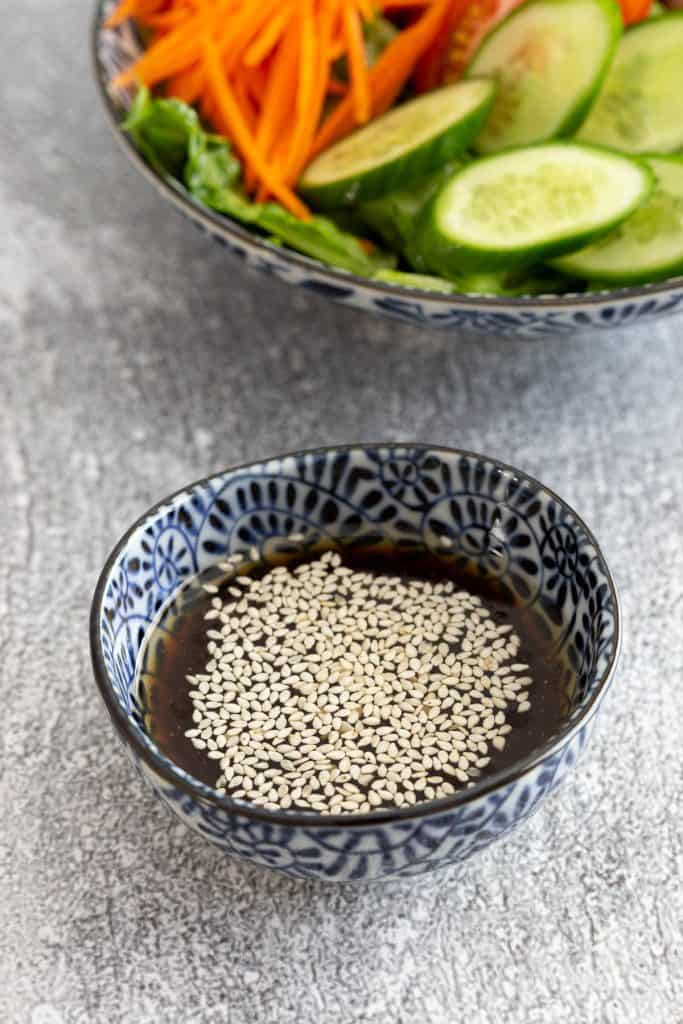
Add more Japanese flavour to your cooking with these amazing recipes:
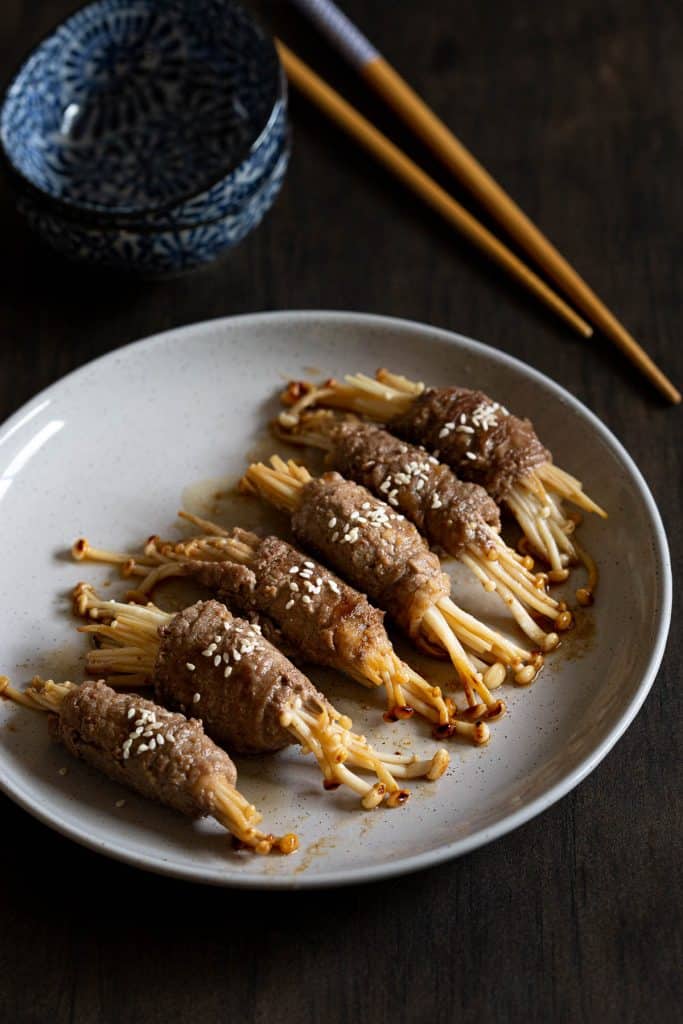
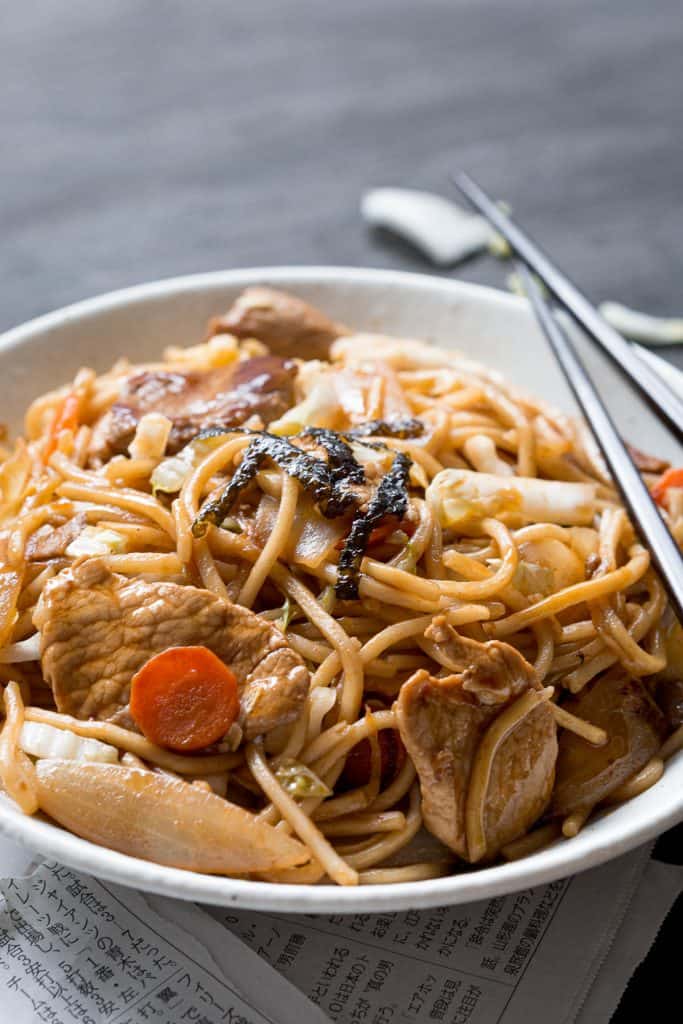
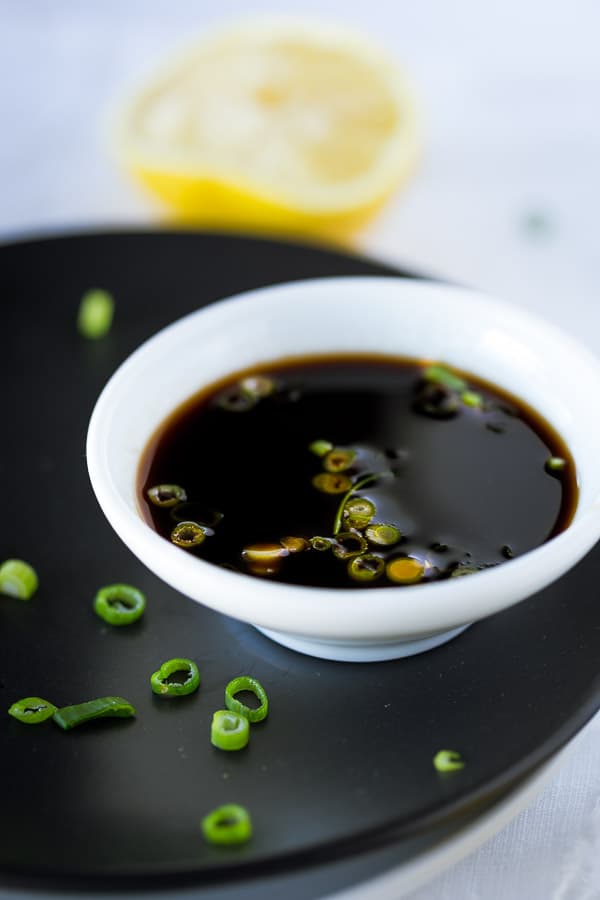
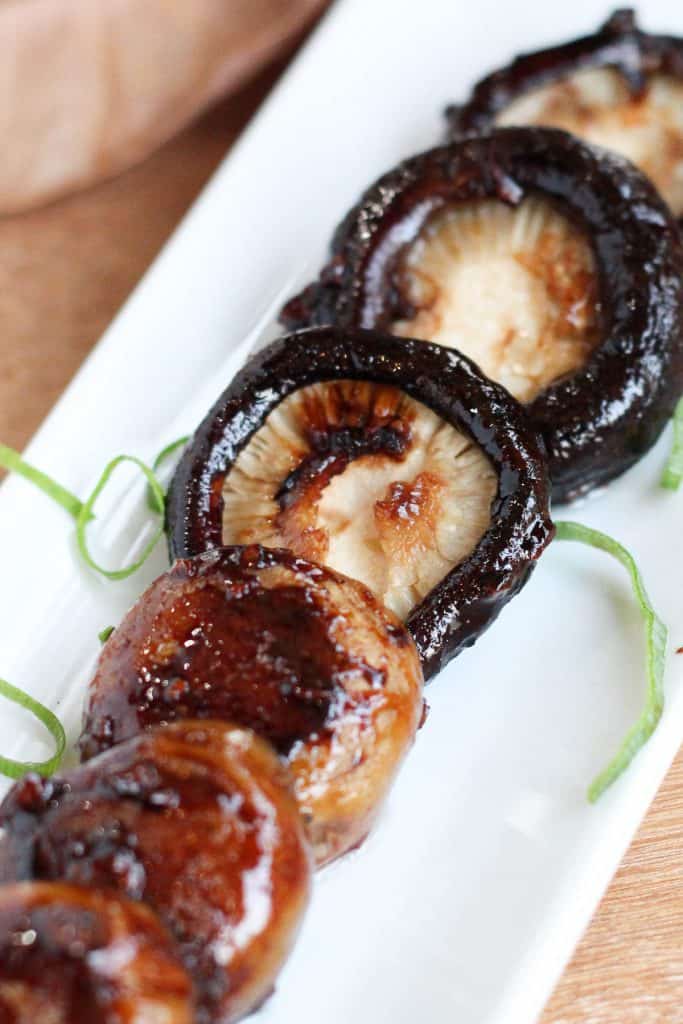
★ Did you make this recipe? Please leave a comment and star rating below!
Ingredients
- 1 tbsp vegetable oil
- 1 tbsp rice wine vinegar
- 1 tbsp soy sauce
- 1 tsp sugar
- 1 tsp sesame oil
- 1 tsp garlic minced
- 1 tsp sesame seeds
- Salt and pepper to taste
Instructions
- Whisk everything together (vegetable oil, rice wine vinegar, soy sauce, sugar, sesame oil, garlic, sesame seeds, salt and pepper) in a small bowl, or pour directly into a bottle or jar and give it a shake.1 tbsp vegetable oil, 1 tbsp rice wine vinegar, 1 tbsp soy sauce, 1 tsp sugar, 1 tsp sesame oil, 1 tsp garlic, 1 tsp sesame seeds, Salt and pepper
- Taste, and add a little more of any ingredient until you're happy with the flavour.
- Use immediately, or store in the fridge in a sealed container for up to a week.
Video
Recipe Notes
- Soy Sauce – You can use any kind of regular or light soy sauce for this recipe. For the best flavour and quality, use a Japanese soy sauce. Tamari is also fine for a gluten-free option.
- Rice Wine Vinegar – Look for this in the international aisle at your local supermarket, otherwise head to an Asian grocer or buy online. If you don’t have this, you can substitute for apple cider vinegar, white wine vinegar, or white vinegar if that’s all you have on hand.
- Vegetable Oil – It’s best to use a neutral flavoured oil that will enhance rather than overwhelm the other seasonings. Canola oil, sunflower oil or vegetable oil are all good options.
- Sesame Oil – Traditionally, wafu dressing doesn’t contain sesame oil, however we love how it adds a depth of rich, nutty flavour. You can leave it out if you prefer. Choose a high quality brand for the best flavour as some sesame oils can have less flavour than others.
- Sugar – Sugar in this recipe acts as a sweetener to offset the acidic tang of the vinegar and bring everything into balance. Any sugar is fine – we used white, but brown or raw sugar will work too.
- Garlic – Freshly chopped or minced garlic works. You can also add 1/2 tsp of ginger for an extra flavour hit if you like.
- Portable Dressing – If you plan on taking wafu salad to work, store the dressing separately in a small tub. This will keep the salad leaves crisp and fresh rather than soggy.
- Optional Garnish – Top with a sprinkling of white sesame seeds (toasted for extra flavour!) or shichimi togarashi (7 spice blend).
- Add Extra Flavour – Add grated fresh daikon, onion or ginger. You could even try a small amount of karashi mustard or fresh wasabi paste for zingy heat.
- Swap Soy Sauce for Ponzu – Use homemade ponzu sauce instead of regular soy sauce for a burst of citrus flavour.
Nutrition


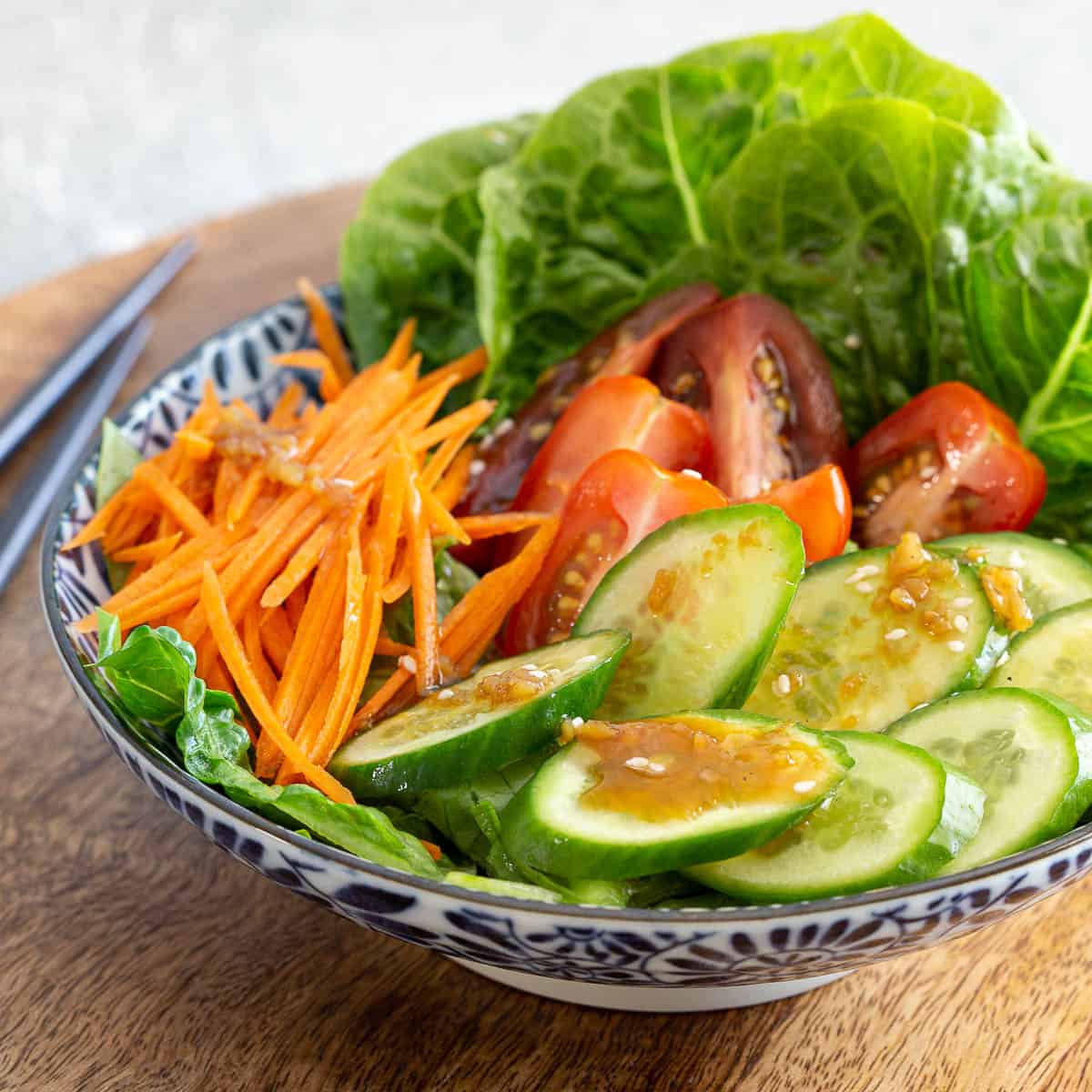



4 Comments
Jill Higgins
06/10/2021 at 3:29 pmSo happy to have found this recipe. It’s very similar to Japanese restaurant salad dressing, which I can now enjoy at home!
Wandercooks
21/10/2021 at 10:45 amAwesome to hear Jill! Hope you enjoy every bite! 😀
Mia
30/07/2021 at 10:46 amHI, I used this dressing for my poke salad; avocado, radishes, green onions, carrots, cucumbers, egg and tuna poke. Chilled sushi rice
Wandercooks
02/08/2021 at 9:22 amAwesome Mia, thanks for letting us know. That’s a great way to use the dressing – love what you popped in your poke bowl too – yum!